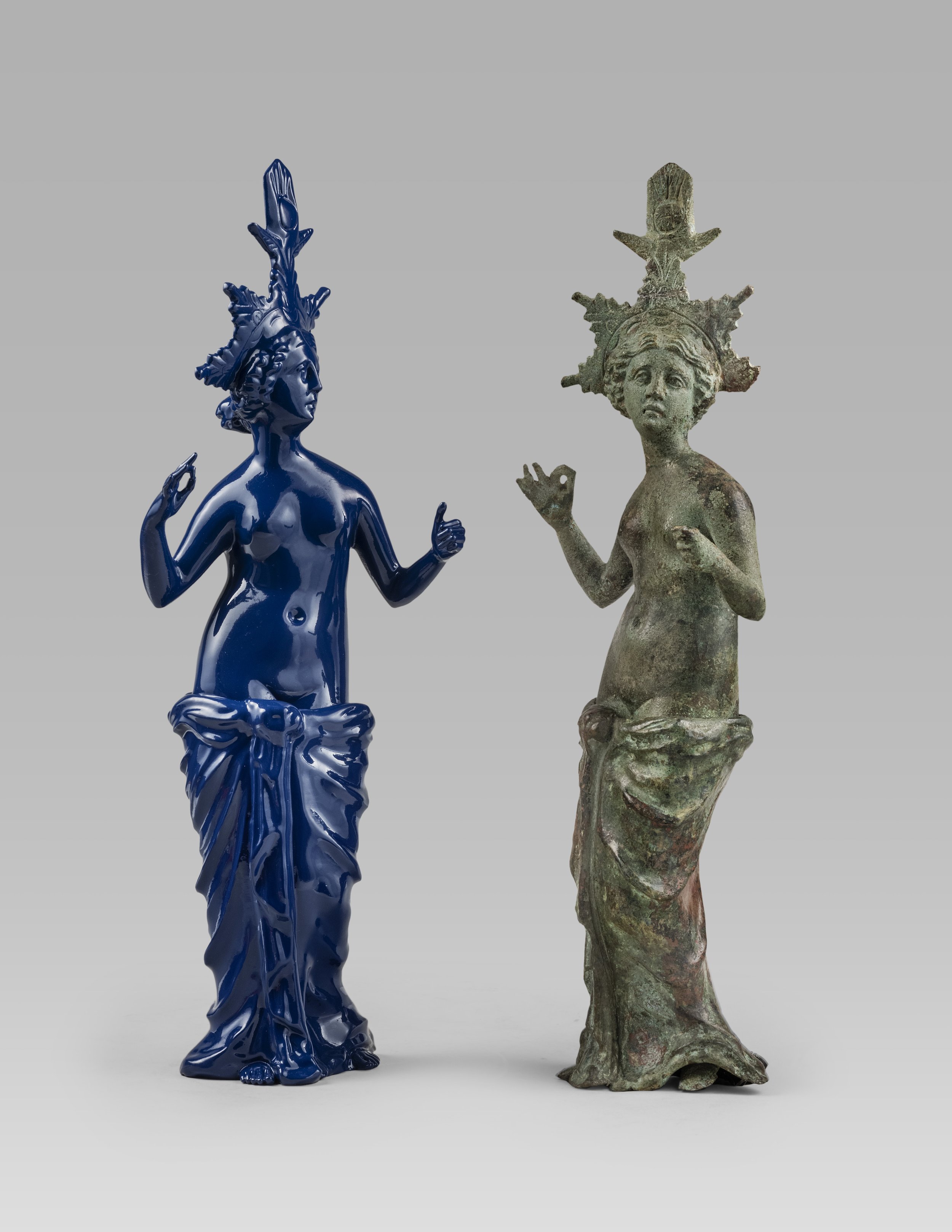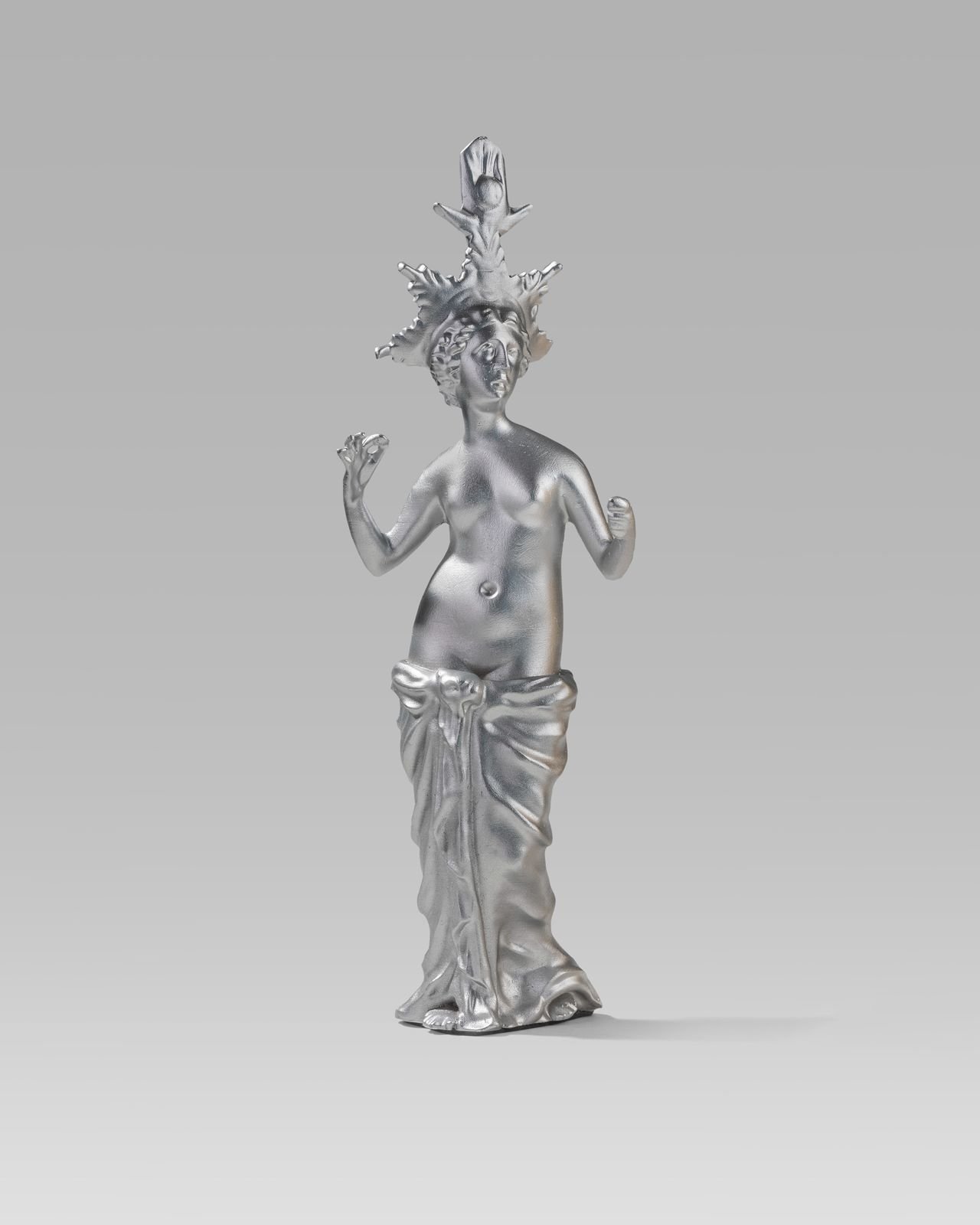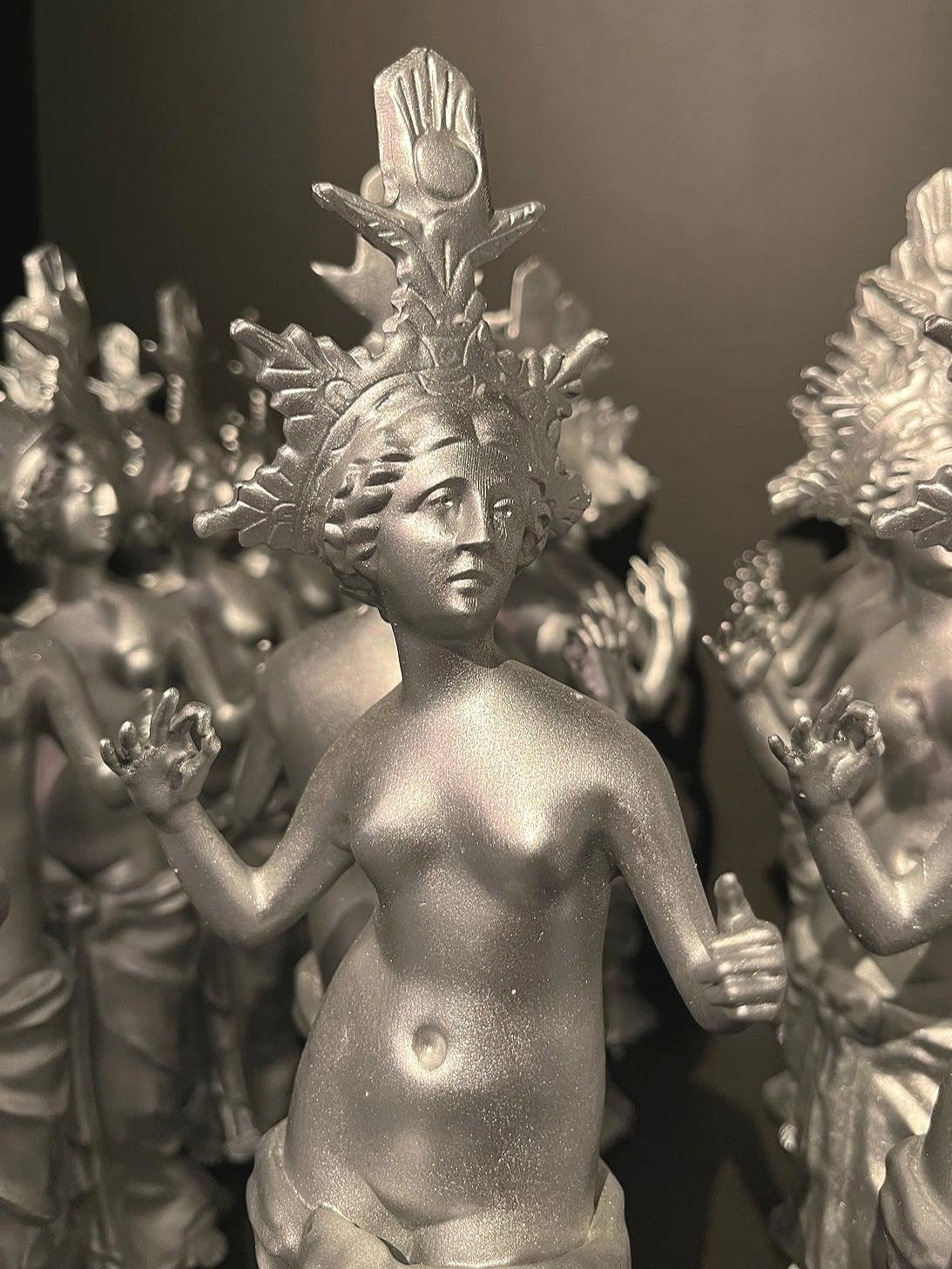Creation
The creation of the contempo starts with research into authentic masterpieces, allowing Antico Contempo to determine how antiques can be thoughtfully reimagined through a contemporary lens. Every piece is examined to identify its unique qualities and what processes are required for adaptation.
High-resolution 3D scans are captured using structured light and infrared sensing, with real-time refinements made to preserve surface nuances and structural integrity. The raw data is reworked to create watertight, workshop-ready meshes.
Through a meticulous back-and-forth process of digital sculpting, 3D printing, and casting and molding, Antico Contempo creates a physical art piece that combines aesthetics of both the ancient and contemporary world.
















